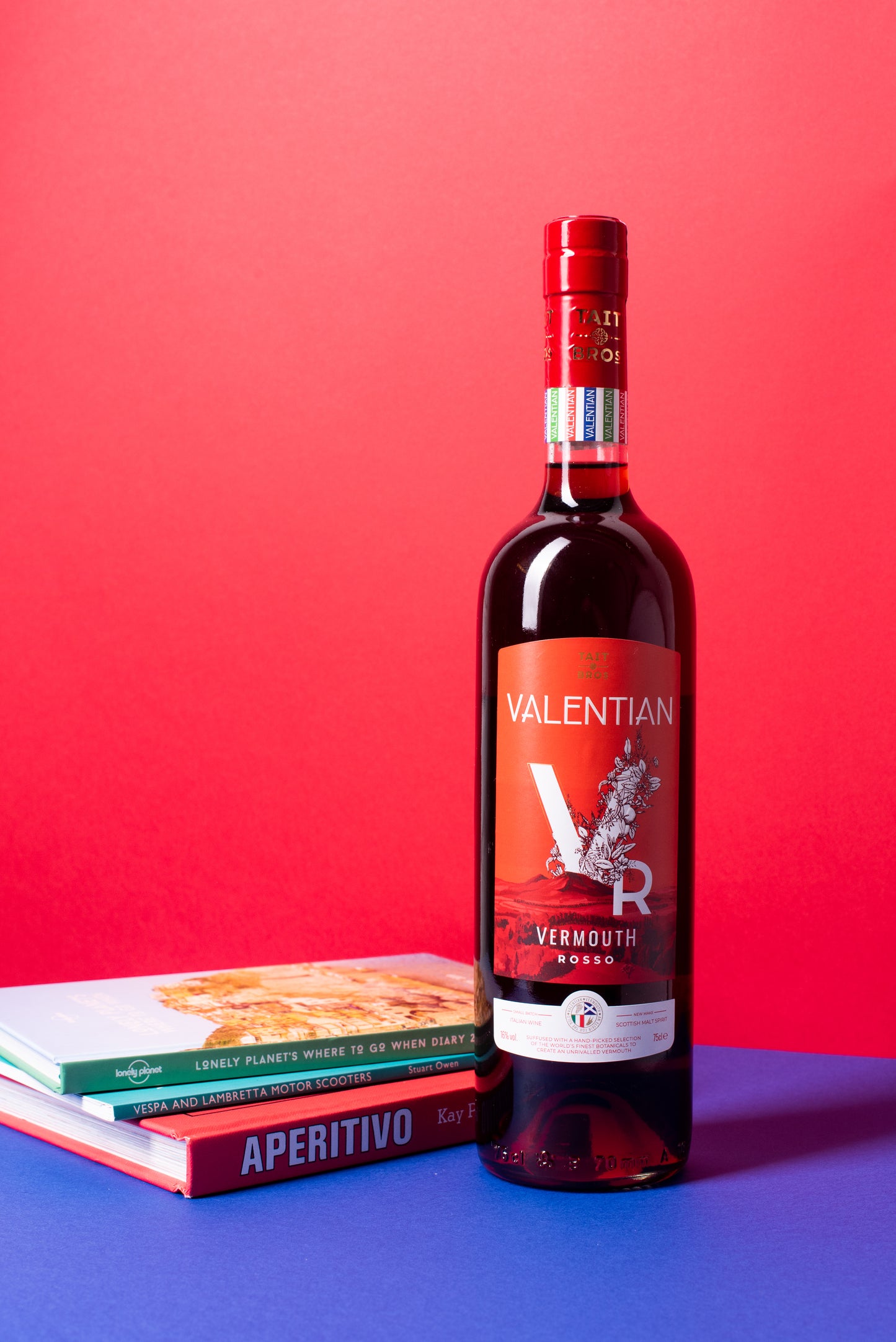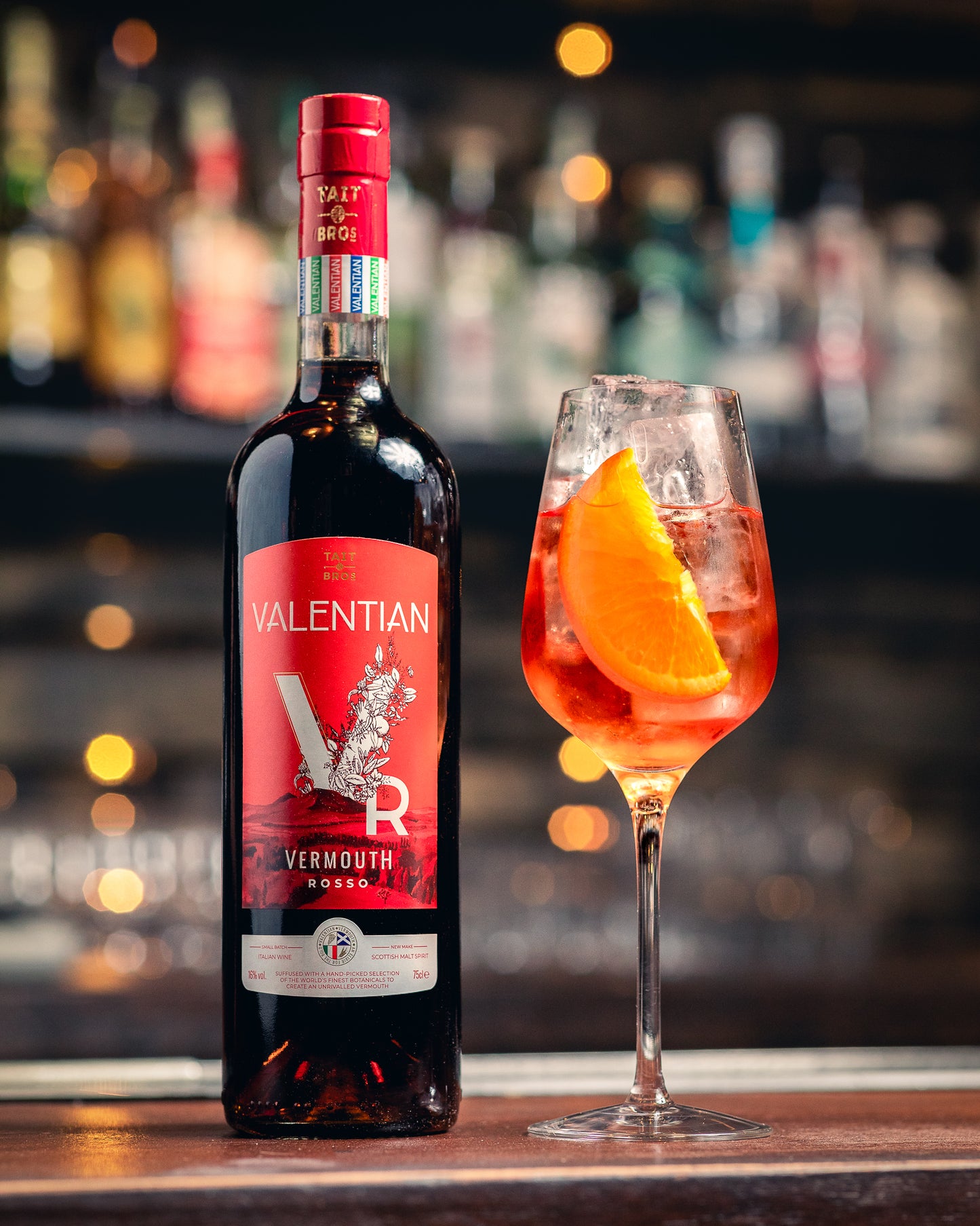
Valentian Vermouth Rosso
 |
Selected by Inka Larissa Inka Larissa is a spirits writer who has been making spirits more accessible through her blog On the Sauce Again for the past six years and recently via her new podcast, Whisky Sisters. |
Inka's Liquid Low-Down
"Commonly mistaken for a spirit but an essential for cocktail lovers, this vermouth can be served on ice or with tonic water as a reduced-ABV option or mixed into a cocktail. Valentian Rosso is my go-to for Negronis, thanks to its lighter body and perfectly balanced botanicals."
Read on for more of Inka's expert insights...
 |
What makes this unique is the blend of Italian white wines and Scottish new make malt spirit (normally used to make Scotch whisky). Valentian is more bitter and lighter-bodied than some of the classic Vermouth di Torinos. You can taste a lot of bergamot and rhubarb, but there is a nice balanced sweetness in there as well. |
 |
This is great as an apéritif. You don’t always feel like mixing complicated cocktails, especially after work, when you just want to sit down and sip something simple, yet delicious. This is why I like to drink Valentian Vermouth simply with some ice and an orange peel. As the flavour profile is not super sweet and it has a fairly strong bergamot flavour, it is very fresh and refreshing to sip on its own. Alternatively, add soda or tonic water to create a long, reduced-ABV drink (150ml tonic, to 50ml Valentian Vermouth Rosso equates to a 4% ABV/0.8 units per glass). |
 |
If you are used to full-bodied and fruity sweet vermouths, this may be a nice surprise as it has a lighter body, more bitterness and citrus on the palate. Consider it a summer vermouth with more vibrant and fresh tasting notes - this makes it an approachable option for those new to vermouth too! |
How to Drink
 |
Sweet vermouth is a common ingredient in many traditional cocktails as it’s so versatile to mix with. Valentian Vermouth makes an excellent Negroni. You get some sweetness at first, but once the drink dilutes a little more, you start to taste the bitterness with lovely, candied orange and rhubarb flavours. |
 |
Vermouths are great served neat without ice, especially after a meal. Pour it over ice and a slice of orange for a refreshing summer drink, soda or tonic is optional. If you do add soda or tonic, add more ice to avoid diluting the drink too fast. Don’t forget to store your Vermouth in the fridge once opened too! |
 |
Ideally, you would use a white wine glass or large stemmed glass for a spritz-style drink and a classic tumbler for shorter serves. |
 |
As this makes an ideal aperitif drink, savoury pre-dinner snacks work well to bring out the sweeter notes of Valentian. Try olives, savoury cheeses like cheddar or salami. |
 |
Selected by Inka Larissa Inka Larissa is a spirits writer who has been making spirits more accessible through her blog On the Sauce Again for the past six years and recently via her new podcast, Whisky Sisters. |
Inka's Liquid Low-Down
"Commonly mistaken for a spirit but an essential for cocktail lovers, this vermouth can be served on ice or with tonic water as a reduced-ABV option or mixed into a cocktail. Valentian Rosso is my go-to for Negronis, thanks to its lighter body and perfectly balanced botanicals."
Read on for more of Inka's expert insights...
 |
What makes this unique is the blend of Italian white wines and Scottish new make malt spirit (normally used to make Scotch whisky). Valentian is more bitter and lighter-bodied than some of the classic Vermouth di Torinos. You can taste a lot of bergamot and rhubarb, but there is a nice balanced sweetness in there as well. |
 |
This is great as an apéritif. You don’t always feel like mixing complicated cocktails, especially after work, when you just want to sit down and sip something simple, yet delicious. This is why I like to drink Valentian Vermouth simply with some ice and an orange peel. As the flavour profile is not super sweet and it has a fairly strong bergamot flavour, it is very fresh and refreshing to sip on its own. Alternatively, add soda or tonic water to create a long, reduced-ABV drink (150ml tonic, to 50ml Valentian Vermouth Rosso equates to a 4% ABV/0.8 units per glass). |
 |
If you are used to full-bodied and fruity sweet vermouths, this may be a nice surprise as it has a lighter body, more bitterness and citrus on the palate. Consider it a summer vermouth with more vibrant and fresh tasting notes - this makes it an approachable option for those new to vermouth too! |
How to Drink
 |
Sweet vermouth is a common ingredient in many traditional cocktails as it’s so versatile to mix with. Valentian Vermouth makes an excellent Negroni. You get some sweetness at first, but once the drink dilutes a little more, you start to taste the bitterness with lovely, candied orange and rhubarb flavours. |
 |
Vermouths are great served neat without ice, especially after a meal. Pour it over ice and a slice of orange for a refreshing summer drink, soda or tonic is optional. If you do add soda or tonic, add more ice to avoid diluting the drink too fast. Don’t forget to store your Vermouth in the fridge once opened too! |
 |
Ideally, you would use a white wine glass or large stemmed glass for a spritz-style drink and a classic tumbler for shorter serves. |
 |
As this makes an ideal aperitif drink, savoury pre-dinner snacks work well to bring out the sweeter notes of Valentian. Try olives, savoury cheeses like cheddar or salami. |

About Valentian Vermouth
Valentian Vermouth is the brainchild of the Tait brothers, David and Dominic, who wanted to create a drink that brings out the best of the malty and fruity spirit.
While walking through the Scottish countryside and enjoying the dramatic scenery of the Borders, the brothers first came up with the idea for Valentian. They then travelled to Piedmont in Italy, where they found a family much like their own: warm, welcoming, and full of laughter, to embark on this journey with.
The vermouth offers a flavour experience that embraces both regions. It is named after the ancient Roman province of Valentia, which is believed to have reached to the Antonine Wall in Scotland.
The botanicals list includes bergamot, rhubarb, three types of wormwood, sage, laurel, gentian root, liquorice root, ginger, sweet and bitter orange, and cinnamon.
Product Specifications
| Class | Low/ Fortified Wine | Size | 75cl |
| Region | Scotland | ABV | 16% |
| Style | Sweet Vermouth | Age | Unaged |




